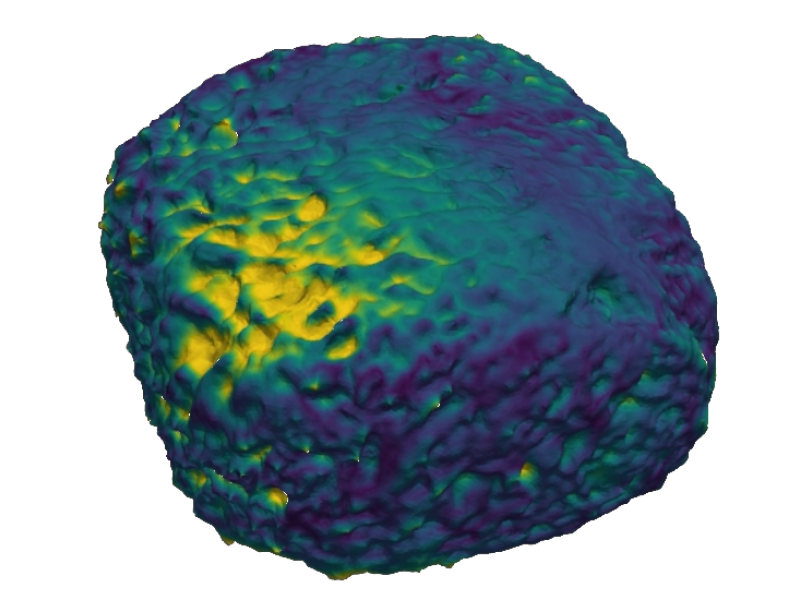Within this interdisciplinary, collaborative research project, we will develop mathematical and algorithmic solutions for analyzing adzes/axes and grinding stones - central technological innovations and core parts of the Neolithization process. To this end, we will derive an integrative approach for the analysis of functional differentiations and adaptations of such tools through Geometric Morphometrics, Use-Wear Analysis, and Experimental Archaeology. This will allow us to investigate uses, working techniques, intensities of use, and complete life cycles providing a deeper understanding of the socio-cultural and economic importance of these tools during the Neolithization and the regional adaptation strategies enabled by them.
Axes (including celts), adzes and grinding stones are the main tools of the Neolithisation process. Both tool classes undergo massive formal and functional changes at the beginning of the Neolithic. Axes become hafted cutting tools and their size increases. Adzes, which are hafted transversely, become part of this inventory slightly later. Both will be labeled as HCT (hafted cutting tools) in the following. Grinding and pounding tools (GPT) become more standardized. New tools are invented in order to crush a multitude of food stuffs and to cope with the steps in the chaîne opératoire of the preparation of ever more diverse meals.
Thus, both tool classes can be defined as central innovations of the Neolithic. In the archaeological discourse these tools have been traditionally linked to the invention and implementation of agriculture and settled life, as tools for land clearance, for the construction of houses, and for the processing of food based on cereals (and pulses). As these functions seemed to be unambiguous, functional studies based on use-wear have been carried out more rarely than morphological or contextual analyses, while experimental studies have mainly centered on the understanding of the efficiency of certain types of tools. However, recent work has shown that methods based on traceology, and especially the use of Geometric Morphometrics, can reveal new information on the materials processed and the intended products (see below). Current research considers multifunctionality for both HCT and GPT as a constant during the Neolithic of Central Europe. For HCT, uses include woodworking, butchery, working of animal hides, stone and earth while GPTs are seen as universal crushers for foodstuffs and minerals.
This multifunctionality touches nearly all core areas of Neolithic life. HTC and GPT offer a so-far unused potential for a deeper understanding of the socio-cultural and economic importance of tools during the Neolithisation and the regional adaptation strategies enabled by them. The proposed research will focus on two regions with different environmental settings and population dynamics during the Neolithic: the Middle Elbe-Saale region on one hand and the foothills of the Alps with the Upper Rhine Plain and the Southwest German Scarplands on the other. The aim is to determine and compare functions of HCT and GPT from representative excavated sites in these regions in order to model regional adaptation strategies through a) tool use for the modification of the environment for a “Neolithic way of life”, and b) through the analyses of local foodways in which these tools are used.
Functional analysis mostly works by identifying wear traces on archaeological finds and comparing them to wear produced experimentally on replicas. Many approaches share basic methodological shortcomings though. Between them are short-time experimental programs without statistical significance, the exclusion of important parameters in experimental settings as well as a holistic approach to the interpretation of wear - often single markers on small spots of the object surfaces are used to interpret whole functional biographies or even the function of complete find assemblages. Functional analyses based on comparisons with replicas mirroring one single stage of use will produce valid results only for this stage but will not help to reconstruct the whole biography of the analyzed tool and cannot be transferred to other tools.
The methodology proposed here is innovative as the reconstruction is focused not on single uses but reconstructs complete biographies including use-times, intensities and functional changes. It does not approach single objects, but attempts a coherent analysis of complete assemblages of finds. The central idea is to understand a particular object as an assemblage composed of multiple use stages reflected in chains of successive changes of shapes and wear. Through simulations of complete biographies of representative types in long-term experiments, the parameters and consequently the functional interpretation can be objectified, measured and modeled for a larger number of tools in different use stages. The method is based on the experimental production of complete wear-series for selected types from an unused stage up to a point when the tools are not functional any more, using them with different materials, motions, and for different tasks.
The mathematical modeling will be done through the periodic measurement of changing shapes and wear with Geometric Morphometrics on 3D-models and microscopical visualization of the mechanical deformation of the surface. This method allows not only to objectify the functional determination but also to gain additional insights into time and intensity of use for the originals, which is important to understand the social dimensions of tools and their entanglement with humans in different societies.
The main project goal is to create an open access reference collection based on chains of use stages for the objects studied and for other similar finds, with a software tool for functional analysis by automatic pattern recognition.
